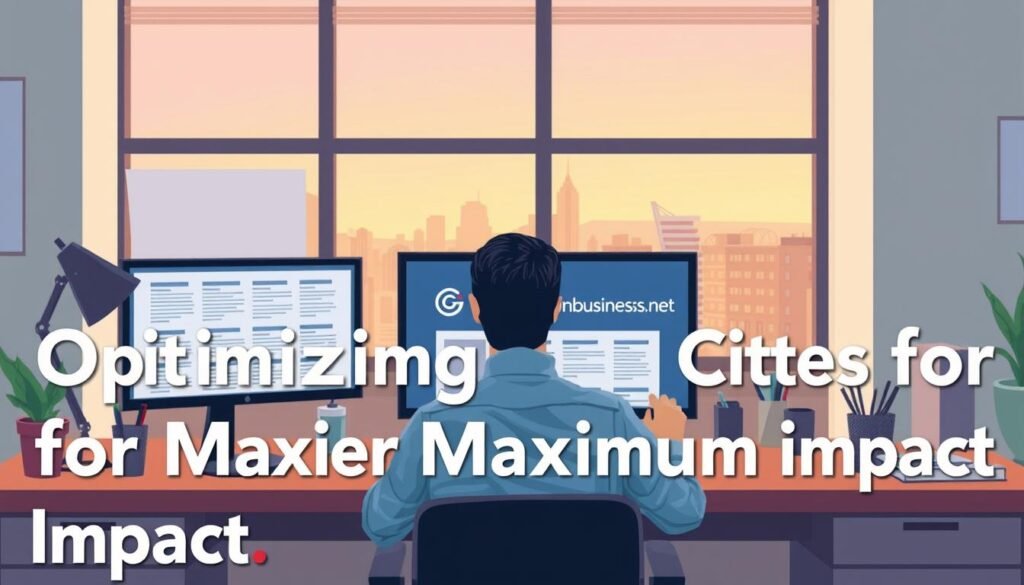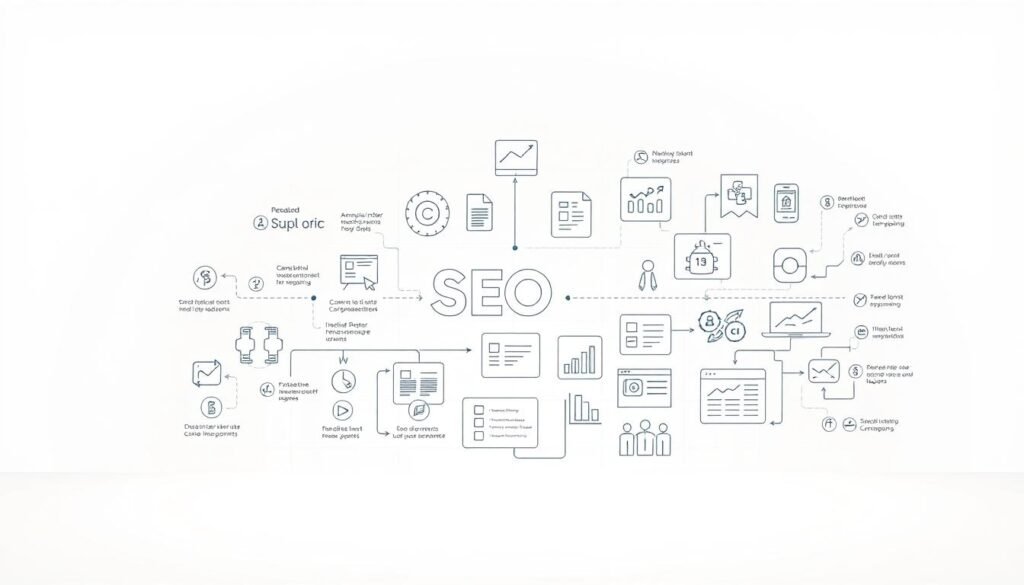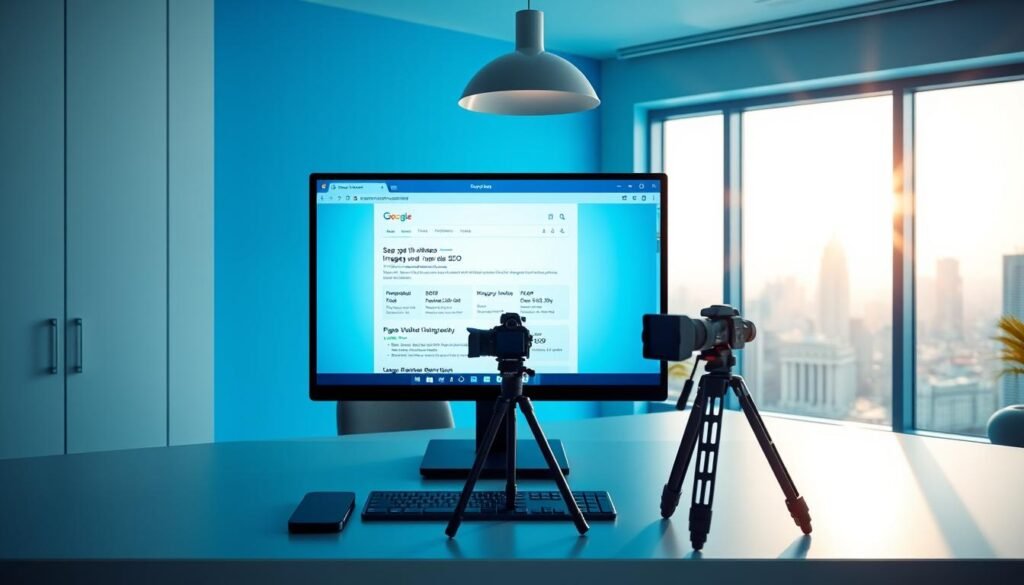Your first step is simple: what are citations seo refers to online listings of your business name, address, and phone number that help your business appear in local search results.
These listings show up on trusted directories like Yelp and YellowPages and on social platforms. They give clear information that helps search engines and users trust your brand.
Consistent NAP (name, address, phone number) across listings improves local seo and lifts your rankings. Quality and quantity both matter: accurate listings on high-authority directories can drive referral traffic and even place you on page one.
Want hands-on support? Call +237 676550185 or email contact@tontonbusiness.net for tailored help to manage listings, choose the right directories, and track results.
Table of Contents
ToggleKey Takeaways
- Citations are simple listings that confirm your business information online.
- Consistency of name, address, and phone number boosts local rankings.
- High-authority directories can win you prominent search visibility.
- Use category choices, descriptions, photos, and links to improve impact.
- Track referral traffic and ROI with UTM tags and monitoring tools.
What Are Citations SEO: Core Concepts You Need to Know
First, grasp the core elements that let engines verify your business identity. A citation is any online mention that includes at minimum your nap—your name, address, and phone number. Consistent entries help search engines match scattered information to a single entity.
Structured mentions live on form-driven listings like major directories and social profiles. These enforce fields for business name, address, phone, and website so engines read them easily.
Unstructured mentions appear in articles, blogs, forums, and press. They lack fixed fields and require manual audits to confirm accuracy.
“Keep your core listing details uniform across sources so your entity signals stay strong.”
- Map your website URL and full address the same way on every listing.
- Use a location page when you serve multiple areas for better user intent match.
- Choose categories that describe how customers search, not the broadest label.
For help standardizing your NAP across platforms, contact contact@tontonbusiness.net or call +237 676550185.
Why Citations Matter for Local SEO and Search Engines
Accurate online listings play a decisive role in where your business shows up locally. The volume, authority, and accuracy of your listings together influence local rankings on major engines. Consistent name, address, and phone details help search engines match scattered mentions to your brand.
Improve local rankings by balancing quantity with quality. A few high‑authority directories often move you farther than dozens of weak entries.
- Piggyback on page‑one sites: Claim profiles on Yelp and YellowPages so your brand appears where people search first.
- Capture referral traffic: Users loyal to specific sites find new places there, sending useful visitors to your website.
- Build trust: Cohesive information across business directories boosts authority and click rates from third‑party listings.
“Choose category‑relevant sites over generic lists to reach the most relevant business audience.”
If you want to prioritize the most impactful listings for your business, email contact@tontonbusiness.net or call +237 676550185 for a quick audit.
How Citations Influence Search: Relevance, Authority, and Intent
Local listings signal more than location; they tell engines how your business fits user intent. Aligning categories with how people look for services often delivers a bigger impact than raw domain authority.
Category relevance vs. domain authority in rankings
Pick categories that match what people search for. Industry-specific directories can outperform broad, high‑authority sites for targeted queries.
Tip: Keep your category taxonomy consistent across all directories to avoid mixed signals.
Why listings aren’t the same as link building
Treat a citation as entity verification more than link equity. A listing may include a link, but engines value it mainly for accurate business information.
Signals search engines use to verify real-world businesses
Search platforms triangulate consistency, presence on core sites, and review sentiment to confirm legitimacy.
- Consistent NAP across multiple sites
- Profiles on Google Business Profile, Yelp, and Bing Places
- Positive review trends and active engagement
“Relevance often trumps raw authority when customers search locally.”
If you need help aligning categories with user intent, contact us at contact@tontonbusiness.net or call +237 676550185.
Building Local Citations Step by Step in the United States
Start your U.S. listing workflow by standardizing your official business name, address, and phone before submitting anywhere.
Step 1: Submit to U.S. data aggregators — InfoGroup (Express Update), Neustar Localeze, and Factual. These hubs push your information to many third‑party websites and directories.
- Step 2: Claim core profiles on Google Business Profile, Yelp, and Bing Places to anchor verified listings at source.
- Step 3: Expand into industry associations, Chamber of Commerce pages, and local community sites to capture intent-rich users.
- Step 4: Run a competitor gap analysis to find sites your rivals use, then replicate and improve those placements.
Use a simple management checklist to track usernames, verification steps, and live statuses. Add descriptive text and quality images during setup to boost engagement from day one.
“Standardize NAP, choose the best category, and point links to the most relevant location page.”
- Prioritize relevant business directories your customers use.
- Keep categories and hours uniform to prevent duplicate records.
Want us to handle submissions and verification? Email contact@tontonbusiness.net or call +237 676550185 for U.S.-focused citation management.
Optimizing Citations for Maximum Impact
Make your listings work harder by tightening every detail that customers see.
NAP consistency and accuracy across all listings
Establish a single source of truth for your name, address, and phone, then audit every directory to match it exactly.
Standardize suite numbers and street abbreviations so machines and people read your info the same way.
Choosing primary and secondary business categories
Pick precise categories that mirror user searches. Primary categories define your core service; secondary ones add depth.
Linking to the best page: location pages vs. homepage
Point the website field to the most relevant location page whenever possible.
This helps customers find hours, directions, and services quickly and can help improve conversions.
Enhancing listings with photos, descriptions, and keywords
Use high-quality photos and optimize file names and alt text where supported.
Write keyword-informed descriptions that focus on benefits for your customers, not long keyword lists.
Activating reviews to improve rankings and conversions
Encourage reviews on prominent sites and respond professionally. Strong feedback helps both ranking and clicks.
“Accurate listings + active reviews = clearer signals and better local performance.”
- Track changes to categories, descriptions, and photos to measure impact.
- Revisit profiles quarterly with new images and seasonal updates.
- Need a NAP cleanup or review strategy? Call +237 676550185 or email contact@tontonbusiness.net for a quick optimization plan.
| Task | Why it matters | Quick action |
|---|---|---|
| NAP cleanup | Improves matching and reduces duplicates | Audit all listings and apply authoritative format |
| Category selection | Aligns with user intent and directories | Choose one precise primary + 1–2 secondary |
| Link target | Boosts conversions and user clarity | Use location page instead of homepage |
| Photos & descriptions | Raises click-through and trust | Upload optimized images and clear copy |
| Reviews | Influences ranking and choice | Solicit reviews and reply to feedback |
Citation Management, Tools, and Tracking Performance
Select a toolkit that keeps your business profiles clean, synced, and measurable.
What to look for in tools: prioritize platforms with broad directory coverage, strong duplicate suppression, and direct API or aggregator support.
- Coverage: industry-specific sites plus core business directories help your online presence.
- Duplicate suppression: reduces conflicting records and preserves NAP integrity.
- APIs and aggregators: speed updates across websites without manual re-entry.
Popular tools and monitoring
For scaled management use Moz Local, BrightLocal, Yext, or Whitespark to submit, audit, and sync listings while maintaining quality for each business profile.
Monitor live status with Little Warden for URL alerts and run scheduled crawls in Screaming Frog to confirm status codes, on‑page fields, and duplicates.
Measuring impact
Standardize UTM parameters on website links within listings (for example: /location/cityname?utm_source=citation&utm_medium=referral) so you can capture referral traffic and conversions in analytics.
Track calls, direction requests, and clicks as early indicators of success. Then correlate those signals with search engines ranking shifts after major updates.
“Choose tools that balance coverage, suppression accuracy, and integration speed to protect your presence and measure real impact.”
| Need | Tool examples | Quick win |
|---|---|---|
| Wide directory reach | Moz Local, BrightLocal | Audit and claim core profiles |
| Sync & API | Yext | Push updates via API |
| Local citation finding | Whitespark | Discover industry sites |
If you want tool recommendations tailored to your stack and budget, call +237 676550185 or email contact@tontonbusiness.net.
Common Pitfalls and Best Practices for U.S. Businesses
A coordinated update keeps your online presence steady during a rebrand or move. Plan changes before you edit any listing so your name, address, and phone move in sync.
Handling rebrands, moves, and phone number changes without losing rankings
Start by updating your Google Business profile, then claim or edit core listings on Yelp and Bing Places. That order reduces downtime and preserves user trust.
- Create a master change plan so NAP shifts occur together across priority listings.
- Suppress or merge duplicates to prevent split signals and loss of visibility.
- Audit core citation sources, industry directories, and local chambers after each change.
- Propagate the new address and phone to high-traffic listings first, then long-tail profiles.
- Keep historical documentation of previous names and locations to speed verifications.
Validate map pins and driving directions after a move to avoid missed appointments. Communicate updates on your website and location pages so third-party information matches what customers see.
“Keep a QA checklist and confirm photos, hours, and categories after every update.”
- Use tools with duplicate suppression and monitoring for continuity and quality.
- Audit multi-location businesses more often; inconsistent updates linger in obscure listings.
- When in doubt, ask for support—email contact@tontonbusiness.net or call +237 676550185 for a changeover checklist.
| Issue | Quick fix | Why it matters |
|---|---|---|
| Partial updates | Run synchronized edits across core listings | Prevents duplicate records and ranking drops |
| Unverified moves | Provide proof and update Google Business first | Keeps visibility and user trust intact |
| Broken directions | Confirm map pins and update location pages | Reduces missed visits and complaints |
Conclusion
Wrap up with a simple routine that keeps your listings accurate and your local search presence growing. Use tools like Moz Local, BrightLocal, Yext, and Whitespark for setup, and monitor with Little Warden and Screaming Frog.
Track referral traffic with UTM-tagged links and measure calls, direction requests, and conversions. Keep reviews flowing and reply promptly to build trust and boost rankings.
Ready to strengthen your local footprint? , Contact us at contact@tontonbusiness.net or call +237 676550185 to get a plan started and turn consistent information into lasting impact.














